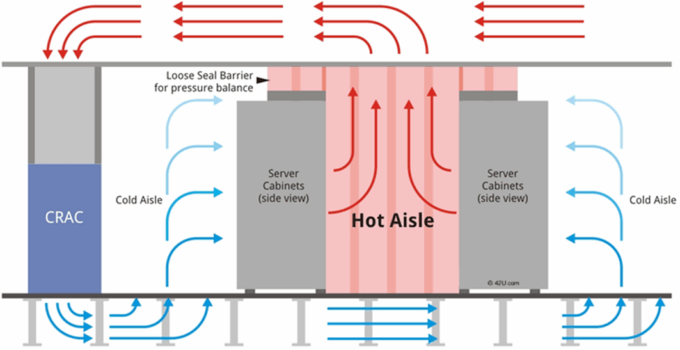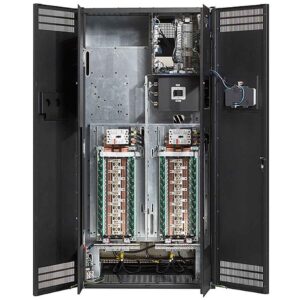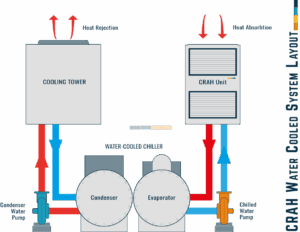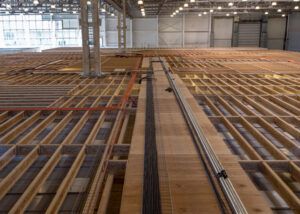What is a CRAC System?
A CRAC (Computer Room Air Conditioning) system is a precision cooling unit built specifically for data-centers.
Unlike typical HVAC systems that serve people, CRAC systems serve electronic equipment and maintain tight environmental control.
They regulate temperature, humidity, and air distribution within critical server rooms.

How CRAC Systems Work
First, the CRAC unit draws in warm air from the equipment room or hot-aisle zone.
Next, the warm air passes over a cooling coil filled with refrigerant (in a direct-expansion cycle).
The refrigerant absorbs heat, then a compressor and condenser reject that heat to the outside or a fluid loop.
After cooling, the unit supplies conditioned air back into the cold-aisle or under-floor plenum, completing the loop.
Meanwhile, it controls humidity and filters particulate contaminants to protect sensitive electronics.
Key Components of a CRAC System
-
Cooling coil & refrigerant circuit: facilitate heat removal.
-
Compressor & condenser: enable the refrigerant to release absorbed heat.
-
Fans / blowers: move air through the unit and across equipment racks.
-
Filters: trap dust and particulates to protect electronics.
-
Humidifier / dehumidifier modules: maintain target relative humidity.
-
Controls & sensors: monitor temperature, humidity, flow and optimize performance.
Typical Applications in Data Centers
CRAC systems are common in small to medium-sized data centers where cooling loads allow refrigerant-based direct expansion.
They integrate well in hot-aisle / cold-aisle layouts and raised-floor environments.
They serve when cooling needs are moderate and chilled-water infrastructure is not yet required or cost-effective.
Advantages of CRAC Systems
CRAC units provide precise environmental control, enabling tighter tolerances for temperature and humidity.
They support high airflow and data-center-specific filtration and humidity regulation, reducing risk to IT gear.
For smaller installs, they offer a more simplified cooling solution than larger chilled-water systems.
Limitations and Design Considerations
While CRAC systems are reliable, they have scaling constraints when rack densities or load grow significantly.
They rely on a direct-expansion refrigerant cycle which may have higher energy consumption compared to chilled-water systems at scale.
Correct sizing is vital: undersizing leads to overheating; oversizing may cause condensation or static-discharge risks.
You must place CRAC units strategically (often adjacent to hot-aisles) and design airflow/return paths carefully.
Integration & Best Practices
Plan the white-space layout with hot-aisle/cold-aisle containment and coordinate CRAC placement accordingly.
Ensure the supply air path from CRAC to racks and return path from racks to CRAC is clear and efficient.
Include environmental sensors (temperature, humidity, differential pressure) and integrate them into the BMS/DCIM system for real-time monitoring.
Design for modularity: allow future increase in cooling capacity, airflow, or upgraded systems as densities increase.
Schedule regular preventive maintenance on filters, coils, refrigerant levels, fans and controls to maintain system performance.
Conclusion
CRAC systems remain a foundational cooling solution in many data-centers.
They deliver reliable, precision cooling for equipment rooms when properly sized and integrated.
Though newer cooling technologies are emerging, CRAC systems still play a vital role—especially for moderate loads and phased expansions.










